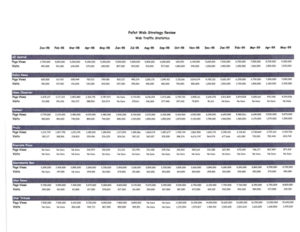Generated by AI, Edited by Human
The March 15, 1999 memo titled “Web Strategy: Steering Committee Working Draft” was prepared for Central Newspapers, Inc. (CNI). It outlines a proposed strategic framework for how CNI should develop and manage its web presence across its various newspapers.
Key elements of the document include:
-
Need for Strategy and Coordination: Recognizing the fragmented and inconsistent web efforts across CNI properties, the memo proposes the creation of a Web Steering Committee to guide future development and unify strategy.
-
Editorial Control and Brand Integrity: Emphasis is placed on maintaining editorial standards and protecting the credibility of CNI’s newspaper brands online. The document highlights the importance of balancing innovation with journalistic values.
-
Business Goals: The memo acknowledges the growing commercial importance of the web and recommends that online efforts be aligned with broader business strategies, including advertising and revenue models.
-
Technology and Staffing: It notes the need for investment in technical infrastructure, training, and possibly new staff roles to support digital operations effectively.
-
Shared Resources and Collaboration: Proposes that CNI newspapers share best practices and technical solutions to avoid duplication of effort and benefit from economies of scale.
This draft represents an early, structured attempt by a traditional newspaper group to grapple with the implications of the digital transition, both operationally and editorially.
Retrospective (From 2025)
Looking back from 2025, this 1999 memo reads as a snapshot of a legacy media company at the edge of digital transformation. It captures the moment when the internet shifted from an experimental add-on to a core business and editorial concern.
While the memo does not predict the scale or speed of disruption that would follow—especially the impact of mobile, social media, and platform-driven distribution—it reveals a strong awareness that digital would require structural and cultural change. The idea of a centralized steering committee to shape digital policy foreshadows modern media governance models around digital ethics, product integration, and content monetization.
Ultimately, this document illustrates how media organizations like CNI were beginning to rethink their identity—not just as print publishers, but as multi-platform content providers. It’s a foundational artifact of journalism’s transition into the 21st century.
